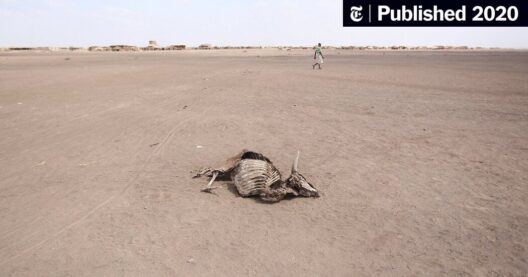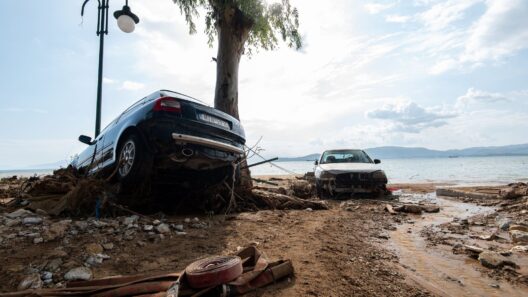In the vast interplay of the Earth’s systems, the relationship between climate change and tectonic activity remains a captivating enigma. It is where atmospheric conditions intersect with geological processes, forming a complex tapestry that challenges conventional understanding. The quintessential question arises: Can climate change indeed provoke earthquakes? This discourse embarks on an exploration of this perplexing connection, uncovering facets that are at once alarming and thought-provoking.
To grasp the intricate relationship between climate change and seismic events, one must first appreciate the tectonic plate theory. The Earth’s lithosphere is segmented into colossal plates that float on the semi-fluid asthenosphere, their movements governed by forces that are often imperceptible to the naked eye. In this dynamic equilibrium, earthquakes materialize as the inevitable consequence of accumulated stress along fault lines. These sudden releases of energy ripple through the crust, reshaping landscapes and altering human destinies. Yet, the question remains: does the climate exert an influence on these subterranean convulsions?
Climate change catalyzes a series of atmospheric and hydrological transformations—rising temperatures, shifting precipitation patterns, and Glacier retreats. Each of these elements potentially influences geological stability. Consider extreme rainfall events. As monsoons unleash torrents of water, the Earth’s surface becomes an unwitting participant in a seismic ballet. Rainwater seeps deep into the ground, exacerbating groundwater levels that can alter the stress distribution along fault lines. It’s akin to a juggler gradually increasing the weight in one hand while the other struggles to maintain balance. Eventually, the equilibrium collapses—much like the veneer of stability in our planet’s crust.
Moreover, the melting of glaciers represents another facet of this complex interaction. Glacial isostatic adjustment, the phenomenon whereby land previously burdened by ice rebounds as it melts, introduces additional stresses to the crust. This ongoing process can trigger earthquakes in regions that had long been dormant, suggesting that the remnants of a bygone climate era are far from extinguished. In remote areas like Greenland and Antarctica, the whittling away of ice sheets may lead to unexpected seismic manifestations, revealing the latent power of climate change.
Furthermore, the ceaseless march of urbanization exacerbates the situation. As cities burgeon, bodies of water are redirected, and landscapes are transformed to accommodate human needs. The construction of dams, for example, can induce seismic activity. Reservoir-induced seismicity occurs when the immense weight of water accumulates behind a dam, altering stress profiles. This, coupled with climate change-induced alterations in rainfall and temperature, leads to a perfect storm—a calamitous junction that underscores the multifaceted nature of these phenomena.
Indeed, climate change can adversely impact geological stability, yet attributing individual earthquakes solely to climate fluctuations remains an arduous task. The earthquake that devastates a community is seldom a solitary event; instead, it is the culmination of myriad factors, each contributing to the overarching narrative of tectonic activity. This is where the notion of attribution becomes both complex and contentious. Can we truly isolate ‘climate change’ as a definitive cause? Or does it merely act as an accelerant, igniting dormant tensions within the Earth’s crust?
This issue stretches beyond empirical analysis; it invokes ethical and policy-oriented discussions. As the specter of climate change looms large, the discourse surrounding preparedness and resilience takes on heightened significance. Communities worldwide must prioritize research that quantifies the seismic implications of changing climate variables. Policymakers and scientists must collaborate, transforming data into actionable strategies—much like crafting a safety net that anticipates the whims of a capricious Earth.
Yet, in the face of uncertainty, one must not succumb to fatalism. The juxtaposition of climate change and seismic activity becomes a call to arms, inciting collective action. The reality is stark: if climate change poses a threat to geological stability, society must amplify its commitment to address the root causes of climate change. Reducing greenhouse gas emissions, fostering sustainable practices, and preserving natural ecosystems are not merely environmental choices; they are imperative actions that serve to protect against the unpredictability of seismic activity. Every ton of carbon avoided is a ton of pressure mitigated beneath our feet.
Here lies the irony: while climate change amplifies environmental challenges, it also galvanizes communities toward change. The interplay between earthquakes and atmospheric conditions serves as a profound reminder of our interconnectedness with nature. In the grand scheme of survival, we are all players in a complex system, our actions resonating far beyond our immediate surroundings. By embracing this interconnectedness, humanity can arm itself against the impending storms—both climatic and geological—that await.
Therefore, acknowledging the link between climate change and earthquakes is not merely an academic exercise; it is a clarion call for proactive stewardship of our planet. By discerning the intricate dance between the atmosphere and the Earth’s crust, one uncovers a narrative replete with lessons on vulnerability, resilience, and ultimately, responsibility. In this age of rapid upheaval, let our awareness crystallize into action, crafting a legacy that preserves our world for future generations. The stakes are indeed high, as the tremors from the past reverberate through the present, shaping our path into an uncertain future.








